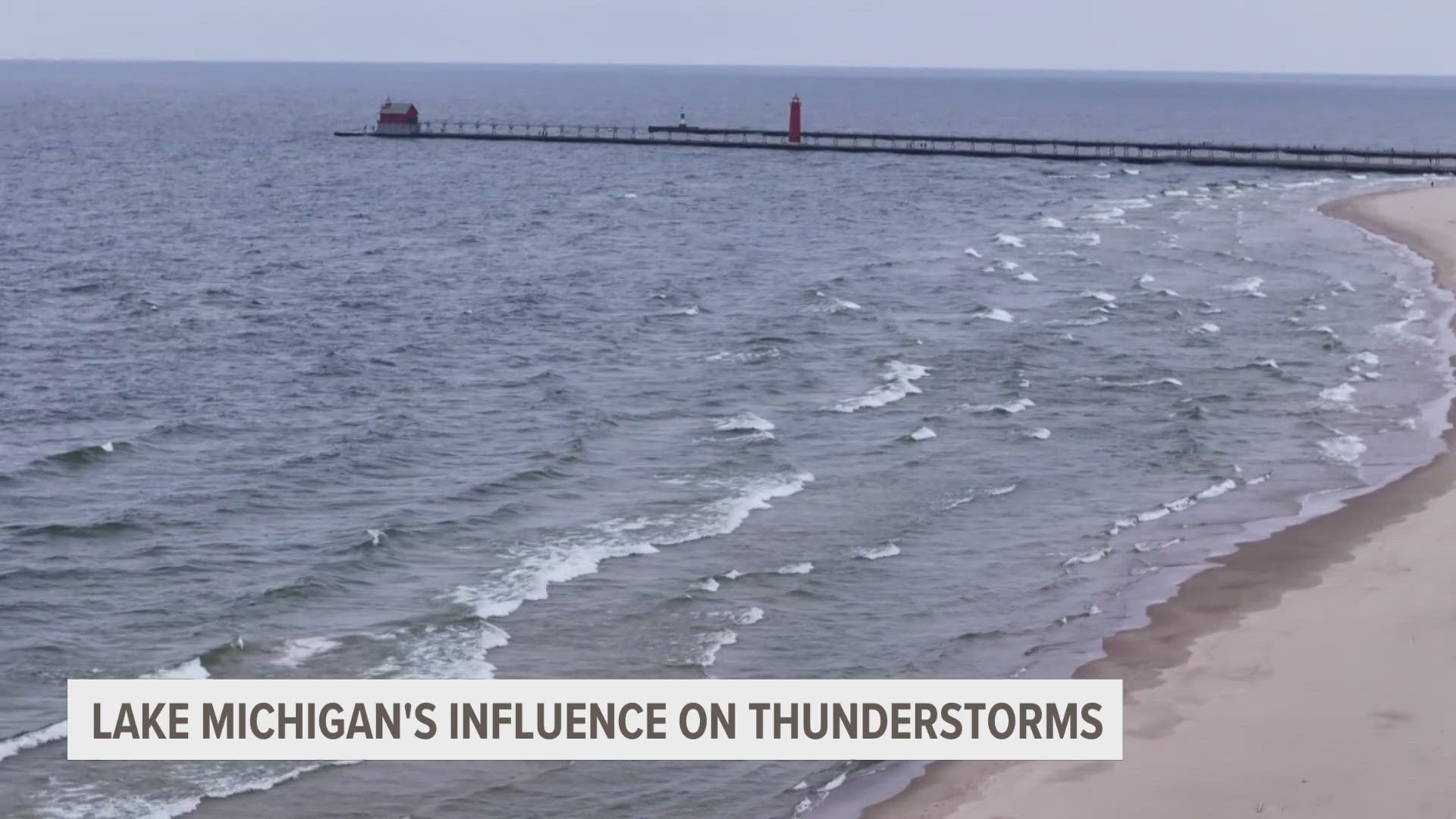GRAND HAVEN, Mich. — It's been an active start to our severe weather season, and there are key components that determine a thunderstorm's strength.
Dr. Jason Keeler, a meteorology professor at Central Michigan University, explained that meteorologists forecast thunderstorms by paying attention to the key ingredients in our atmosphere.
"In general, there's four different things that we look at: Moisture, instability, lift and shear. So, all of those ingredients are things that Lake Michigan is going to impact," said Keeler.
Lake Michigan plays a huge role in our weather and changes how meteorologists analyze those ingredients and how they change as a thunderstorm passes over a body of water.
"As air is passing over that cooler lake, the air itself cools, and that causes that air to become more stable or less unstable. So, that lake, in some cases, is going to hinder that thunderstorm," Keeler said.
The question then becomes, what if the water keeps getting warmer than normal? Is there a point where the water no longer hinders thunderstorms and will be less of a buffer to approaching storms?
"The idea of how a lake impacts crossing storms is a little complicated. There is work on Lake Erie, but still applies here, that shows that when you're crossing the lake, the storms will survive if the lake is very cold, and the storms actually do something called become elevated. So, it's essentially not affected by the lake," Keeler said. "If the lake is kind of warm, the storms are able to try to ingest some of that air and it being slightly cooler actually can help to make those storms fall apart. And then if the lake is really warm, then that allows those storms to pass over the lake and persist."
This past year, we saw the lowest ice coverage on record, leading to warmer-than-normal water temperatures already. With a warmer-than-normal projected summer, chances are Lake Michigan will only continue to trend warmer than normal, potentially changing how much it hinders crossing thunderstorms. Although, it's important to remember that the lake is only one of many factors that can influence a thunderstorm.
"The lake is one of many different things that affect thunderstorms. And so if everything that's going on on the larger scale weather favor storms, then when we have those storms, that lake will be one additional layer of impact," said Keeler.
Therefore, the lake would potentially act as less of a buffer and allow more late-season thunderstorms to survive their voyage across the big lake.
Keeler is further invested in studying what happens once the thunderstorm interacts with land again.
"So, we're going to be down in the Saugatuck/Holland area and we're going to be looking at how air that was over the lakes to see how the lake itself influences locations where storms do develop, if they develop, and what the characteristics of those storms," said Keeler.
Researchers will be set up from Saugatuck to Lansing seeing what happens to those storms as they work inland. There will be five different universities involved in this research study and 13 ON YOUR SIDE plans to follow along their journey and what discoveries they might make.
►Make it easy to keep up to date with more stories like this. Download the 13 ON YOUR SIDE app now.
Have a news tip? Email news@13onyourside.com, visit our Facebook page or Twitter. Subscribe to our YouTube channel.
Watch 13 ON YOUR SIDE for free on Roku, Amazon Fire TV Stick, and on your phone.

